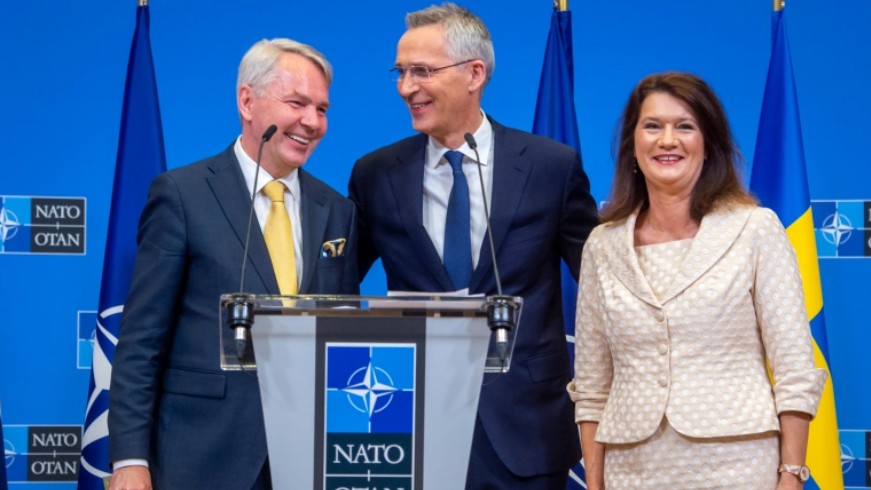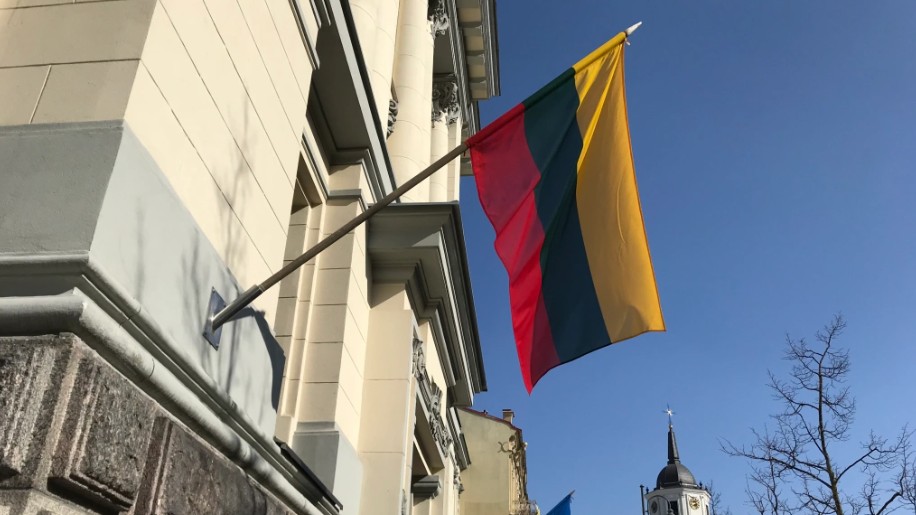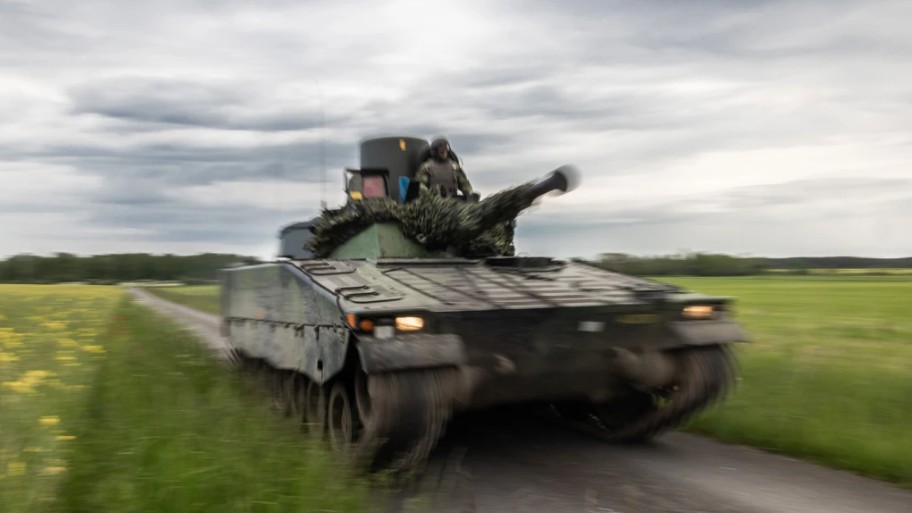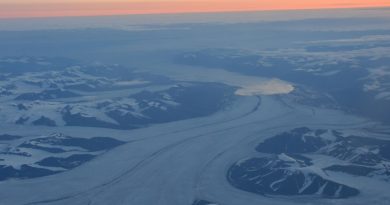Blog: A line drawn here … Arctic boundaries shift in a time of conflict

As the Russian invasion of Ukraine entered its fifth month, and with little sign of a resolution, Arctic governments in the West have continued to pursue different avenues of cooperation to respond to the aggression of the Putin regime. The question of when and how the Ukraine conflict may spill over more directly into the Arctic is an omnipresent concern throughout Europe and North America, and these worries have manifested themselves into a redrawing of various borders in the far north, including in some unexpected places.
Finland and Sweden have continued to pursue fast-track membership in NATO, which if successful would place all Arctic governments save Russia within the alliance, and place the far north as a higher priority for the organisation. Canada was the first country to ratify the two states’ NATO applications, while previous opposition from the Recep Erdoğan government in Turkey (Türkiye) was dropped, (at least for now), after successful negotiations on the eve of the NATO summit in Madrid earlier this month.
Moscow’s response to the two Arctic nations’ NATO bid has been mixed, seemingly accepting of their probable accession, but also warning that Russia would ‘respond in kind’ if new military contingents and infrastructure were stationed in the two countries. Finland shares a 1330km border with Russia, and Helsinki had confirmed last month that it would be fortifying that frontier with various additional barriers.
In addition to land borders, the two applications also serve to push various security concerns in the Baltic Sea and Nordic-Arctic region closer together. For example, Russia maintains an enclave, Kaliningrad (Калининград), with a population of approximately 475,000, which is bracketed by Lithuania and Poland by land. This territory would be surrounded by sea with NATO member states should Helsinki and Stockholm be successful in their bids.

Relations between Lithuania and Russia chilled further last month after the former sought to enforce European Union sanctions on Moscow by restricting land-based shipments of goods from Russia proper to Kaliningrad via Lithuanian territory, a move which Russian official decried as tantamount to a blockade. However, this week the EU Commission stated that rail shipments to Kaliningrad from Russia would be permitted (with checks) save for weapons transfers, and Vilnius confirmed that it would abide by that decision, while stating that ‘Lithuania continues to advocate for the stricter and broadest possible modalities of the application of the EU sanctions’.
The Swedish island of Gotland (population 60,000) in the Baltic Sea has also been cited as a potential hotspot in the wake of NATO-Russia tensions. In mid-June, Finland and Sweden joined fourteen NATO member states, (including the US, Britain, Norway and the three Baltic nations), in the exercise Baltic Operations (BALTOPS 22), which involved manoeuvres on Gotland.
The island, which lies in the north-central part of the Baltic Sea, had previously been demilitarised, but that policy had been reversed over the past five years, in light of growing concerns about the vulnerability of Gotland to Russian aggression, given its location between Sweden and the Baltic states, (all three of which have recently called upon NATO to supply increased troop numbers, given their specific vulnerabilities to Russian attack).

Each of these examples have illustrated the growing strategic ties between the Baltic and European Arctic regions because of NATO’s expansion and mutual concerns over Moscow’s longer-term plans. As a senior Latvian government official noted this week, ‘Russia is also “throwing” challenges to the north, in the Arctic,’ and that the addition of Finland and Sweden into the alliance will strengthen the security of both regions. Latvia, as well as Estonia, are seeking formal observer status in the Arctic Council, which is itself having to maintain its operations with ties cut between Russia and the other seven members.
A more esoteric change in the Arctic’s frontiers was also confirmed late last month when the nearly half-century dispute between Canada and Denmark was finally settled with an agreement to create the world’s northernmost international border on Hans Island (Tartupaluk / ᑕᕐᑐᐸᓗᒃ), which had been claimed by both states as part of their respective Arctic lands. The uninhabited island, with an area of only 1.3 square kilometres, lies in the Kennedy Channel right on the maritime border, agreed to in 1973, between Nunavut’s Ellesmere Island and the western coast of Greenland.
For decades, Copenhagen and Ottawa pressed their claims to the rocky outcropping in often-unusual ways, including leaving national flags and bottled of local libations on the rocky islet, (which is why the dispute was often called the ‘Whisky War’).
While negotiations between the two governments over the ultimate status of the island was amicable, the talks were also becoming increasingly pressing given the opening up of the Arctic due to ice erosion, with both parties sensitive to not being perceived as being too conciliatory given the importance of Arctic sovereignty to both governments. The border option was one of two potential solutions to the disagreement, with the other being a ‘condominium‘ option, referring to joint stewardship.
The resolution of the Hans Island dispute was negotiated by both governments along with Inuit representatives in Nunavut and the government of Greenland, (under the 2009 Self-Rule Act [pdf] between Denmark and Greenland, the former retains authority over Greenlandic foreign affairs, including border negotiations). Freedom of movement on the island would also be guaranteed for local populations in Nunavut and the Avanersuaq region of Greenland.
The new boundary, running relatively north-to-south, would be about 1.28 kilometres in length and grant Denmark about sixty percent of the island’s land area. Lingering disputes over the demarcation of the Labrador and Lincoln Seas were also resolved at the same time. This would be the first land border Canada has ever had with Europe.
In 2018, a task force had been established to finally resolve the Hans Island dispute, and the announcement of the agreement last month took on new meaning in light of Russia’s attack of Ukraine. There were many comments on the symbolism of peacefully resolving longstanding territorial differences in the Arctic at time when Russia was pursuing an invasion and flouting international law.
The concept of ‘one Arctic’ which was free of most political concerns had been fast dissipating over the past decade, as the region began to become economically attractive to many Arctic (and non-Arctic) actors. However, this process has accelerated since the Ukraine conflict and severed Russian diplomatic relations with most of the West. The shifting of cooperation patterns around the far north is just the latest illustration how just how much the political landscape on the region has been changing, and at such a rapid pace.
Related stories from around the North:
Canada: Arctic Security – Will Canada’s federal budget deliver for NORAD?, Eye on the Arctic
Finland: US military refuelling plane flies over Finland day after NATO announcement, Yle News
Greenland: Denmark, Faroe Islands agree to establish air surveillance radar to bolster gaps in Arctic surveillance, Eye on the Arctic
Iceland: Arctic security discussed at Reykjavik Northern Group meeting, Eye on the Arctic
Norway: “Useless to continue regional diplomatic relations”, The Independent Barents Observer
Russia: Repressive authorities block Indigenous Russia site, The Independent Barents Observer
Sweden: Finland will not go into NATO without Sweden, president says, Radio Sweden
United States: U.S. Army poised to revamp Alaska forces to prep for Arctic fight, The Associated Press.



